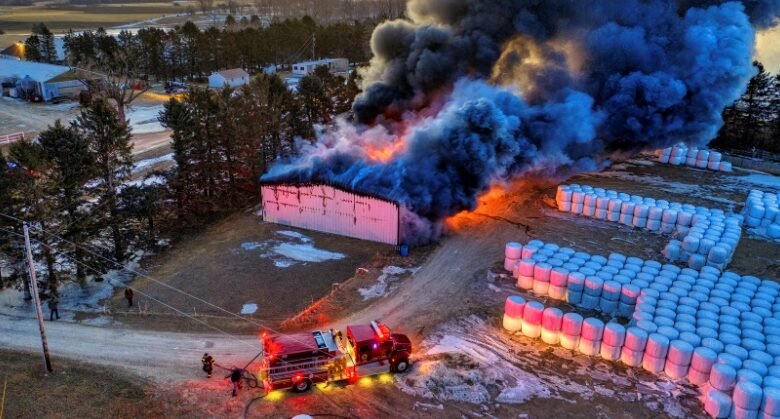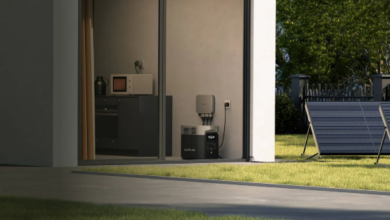Why Fire & Smoke Restoration Is No Longer Optional in High-Risk Areas

The rise in wildfires, electrical fires, and accidental residential blazes has transformed the way property owners must prepare for and respond to disaster. In high-risk regions, where fire incidents are becoming more frequent and severe, waiting until the damage is done is no longer an option. Immediate action isn’t just smart, it’s essential. Fire and smoke restoration is no longer a luxury service but a critical part of protecting property value, health, and long-term safety.
The New Normal: Rising Fire Risks in Residential Zones
In recent years, wildfires, electrical malfunctions, and sudden residential blazes have increased drastically, especially in areas once considered low to moderate risk. Climate change, aging electrical infrastructure, and urban expansion into forested zones have combined to create a perfect storm. As fire incidents rise, homeowners and business owners in high-risk regions can no longer afford to view fire and smoke restoration as a luxury or a future consideration. It is now a critical necessity.
Immediate Damage Is Only the Beginning
The visible destruction after a fire often tells only half the story. Flames consume structures, yes, but smoke invades every porous surface, lingering in drywall, insulation, and HVAC systems. Within hours, this smoke begins to settle and solidify, embedding dangerous particulates and odors deep into the property. Even small fires, like a kitchen mishap or an electrical short, can cause smoke-related damage throughout an entire building.
This is where fire and smoke damage restoration becomes essential. Without professional intervention, these particles cause corrosion, discoloration, and persistent odors, compromising both air quality and structural integrity. Delayed restoration doesn’t just increase health risks, it drives up repair costs exponentially.
Health Risks Lurk in the Air
Soot and smoke residue are more than unsightly. They’re toxic. According to health and environmental experts, the byproducts from synthetic materials that burn in most modern homes include formaldehyde, benzene, and other hazardous chemicals. Prolonged exposure can trigger respiratory problems, allergic reactions, and even long-term conditions like asthma or heart disease.
High-risk areas, especially those affected by recurring fires, are especially vulnerable. The presence of fine particulate matter (PM2.5) in the air can linger for days, and in poorly restored environments, for weeks or even months. Restoration is not just about aesthetics or structure, it’s about safeguarding health.
Insurance Is Not a Plan, It’s a Backup
Many property owners mistakenly assume that insurance will handle everything after a fire. While it does provide financial relief, most insurance companies expect swift action from policyholders. Waiting too long to start the cleanup process can result in denied claims due to “neglect” or “lack of mitigation.”
Professional restoration companies not only clean and repair but also document every stage of damage, a critical part of insurance claims. Teams like those at Fine Restoration are trained to work with all major insurance providers, ensuring smoother claim approvals and minimizing out-of-pocket expenses.
Hidden Damage Escalates Quickly
One of the most overlooked aspects of fire recovery is what lies behind the walls. Heat from a fire can damage electrical wiring, plumbing systems, and insulation without obvious outward signs. Smoke can travel through ductwork into areas not directly affected by the fire.
Professionals use thermal imaging, moisture meters, and air scrubbers to identify and remove hidden threats. Without proper detection and cleaning, residual damage often resurfaces later, sometimes leading to secondary disasters like mold outbreaks or electrical fires.
Restoration Prevents Permanent Loss
Fires destroy memories, valuables, and essential business infrastructure. Yet, many items deemed “total losses” are recoverable with the right methods. Fire and smoke damage restoration professionals are equipped with ozone treatments, ultrasonic cleaning systems, and specialized deodorization technologies to salvage electronics, documents, and furniture.
In high-risk areas, having a restoration plan in place and acting immediately after a fire can mean the difference between a partial recovery and a total loss.
Fire Seasons Are Longer, and Recovery Windows Are Shorter
Seasonal fires used to be predictable. Now, the fire season starts earlier, lasts longer, and occurs in unexpected regions. This unpredictability increases the urgency of having a response plan and a trusted restoration partner ready before disaster strikes.
Fire and smoke damage restoration is no longer a post-event service. In many regions, it’s becoming part of routine disaster preparedness. Just like homeowners invest in stormproof windows or sump pumps, having a restoration partner on standby is the new standard.
Choosing the Right Restoration Team Makes the Difference
In high-risk zones, response time is everything. Fine Restoration offers 24/7 emergency services throughout Kansas City and surrounding areas, ensuring that no family or business is left waiting. Their team of certified professionals, including Nik Custer and Jacob Ross, brings years of experience and nationally recognized certifications to every job. Their rapid deployment and advanced recovery tools allow properties to return to livable conditions faster and safer than standard cleanup methods.
In a time where the threat of fire is more persistent than ever, treating restoration as optional is no longer viable. It’s a critical investment in health, property, and peace of mind.
Company Name: Fine Restoration
Phone Number: (816) 489-3222
Call now for immediate service.
Address: 3719 U.S. Hwy 40 Suite A&B, Blue Springs, MO 64015
Service Area: Kansas City, Missouri and surrounding areas
Hours: 24/7 Restoration services
Services: Water Damage, Fire Damage, Mold Remediation, Storm Damage Restoration, Basement Flood, Sewage Backup, Ceiling Leak Repair, Appliance Leaks





